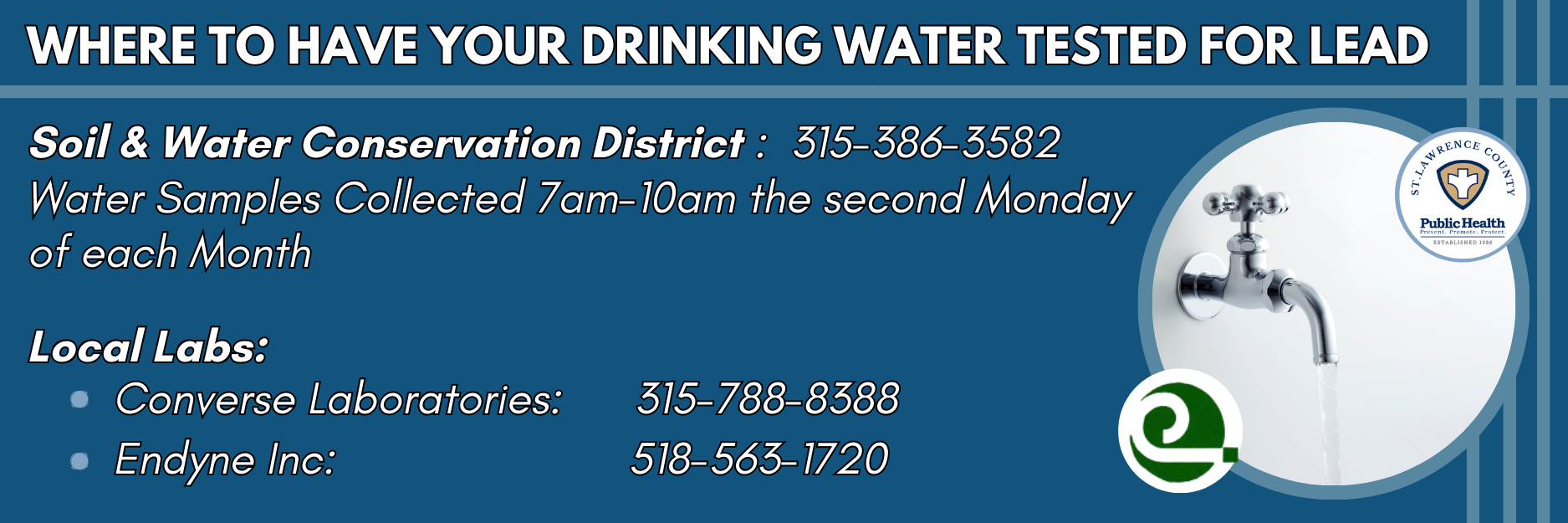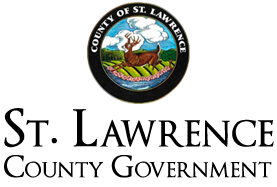Despite significant progress, childhood lead poisoning remains a serious problem in St. Lawrence County and throughout New York State. All children with lead poisoning are eligible to receive support from the Childhood Lead Poisoning Prevention Program. We help connect parents with resources to identify how their child was exposed to lead and what to do about it.

Signs of Lead Poisoning:
Often, there are no signs of lead poisoning, but even low-level lead exposure can cause learning and behavioral problems, like trouble paying attention. Symptoms of lead poisoning may include:
- Loss of appetite
- Feeling tired or irritable
- Poor growth
- Nausea and vomiting
- Constipation
- Stomach pain
- Joint pain and muscle weakness
- Headaches
Talk to your doctor about a blood lead test
A blood lead test is the only way to determine if your child has lead poisoning. All children should be tested for lead at age 1 and again at age 2 as well as all children at high risk for lead poisoning. In St. Lawrence County, many children may be at risk for lead poisoning as the majority of our housing supply was built before a ban on lead-based paint in 1978.
Risk Factors for Lead Poisoning:
- Does your child live in or regularly visit a building built before 1978 with potential lead exposures, such as peeling or chipping paint, recent or ongoing renovation or remodeling, or high levels of lead in the drinking water?
- Has your child spent any time outside the US in the past year?
- Does your child live or play with a child who has an elevated blood lead level?
- Does your child have developmental disabilities, put nonfood items in their mouth, or peel or disturb painted surfaces?
- Does your child have frequent contact with an adult whose job or hobby may involve exposure to lead, such as house painting, plumbing, renovation, construction, welding, electronics repair, battery recycling, lead smelting, jewelry, stained glass or pottery making, fishing, firearms, or collecting lead or pewter figurines?
- Does your family use traditional medicines, health remedies, cosmetics, powders, spices, or food from other countries?
- Did your child miss a lead test? New York State requires all children be tested for lead at age 1 and again at age 2.
Keep your Home Lead-Safe
The majority of homes in St. Lawrence County were built before a ban on lead-based paint. Children can become lead poisoned when they ingest or inhale lead or lead-contaminated dust that is present in their environment. Keep your home lead-safe by:
- Fixing areas with chipped & peeling paint
- Regularly clean floors, windowsills, and dusty surfaces with a mop and wet cloth
- Use cold flushed tap water for mixing formula, drinking, and cooking
- If your work or hobbies involve exposure to lead, change your clothes and shower when finished
- Follow safe work practices for removing lead-based paint or hire lead-safe contractors
- Have your water tested for lead
Wash Hands
- Use soap and water (warm or cold) to wash children’s hands several times a day, especially after playing outside or with animals.
- Adults should wash their hands after participating in activities in which they may have come in contact with lead.
What to do if Your Child has an Elevated Blood Lead Level-
Call the St. Lawrence County Lead Poisoning Prevention Program at 315-286-2325. We can help connect you with resources to identify how your child was exposed to lead and what to do about it.
Eliminate the Sources of Lead
All children enrolled in the lead poisoning prevention program are eligible to have their homes tested for lead, at no cost to them. We work with property owners to identify lead in the home and develop a plan to address it.
Homeowners can also hire an EPA-certified inspector or risk assessor to test their properties for lead. A list of local companies can be found at:
https://cdxapps.epa.gov/ocspp-oppt-lead/firm-location-search
A number of lead test kits are available for purchase in most hardware stores, however, the Consumer Product Safety Commission (CPSC) warns customers to exercise caution when using such test kits to evaluate lead exposures.
Wet Cleaning
Lead in household dust results from indoor sources such as old lead-based paint on surfaces that are frequently in motion or bump or rub together (such as window frames), deteriorating lead-based paint, and unsafe home renovations.
To reduce exposure to lead dust, it is especially important to:
Maintain all painted surfaces in good condition Clean frequently using a mop, wet cloth, or sponge to reduce the likelihood of lead chips and dust forming Ensure your vacuum cleaner is equipped with a HEPA filter to prevent further spreading of dustGood nutrition can help reduce the effects of lead. Focus on foods high in Iron, Calcium, and Vitamin C.
You can also ask your child’s doctor about an iron supplement.
Focus on Nutrition
- Home Renovation, Repair, and Painting
-
If you are performing any renovations or repairs on your pre-1978 house then you need to work lead-safe!
Doing the Work Yourself?
Learn how to use Lead-Safe Work Practices when remodeling, repairing, or painting your home. Every year hundreds of children are diagnosed with lead poisoning due to exposure of lead dust during home repairs and renovations.
Hiring a Contractor?
Make sure they are certified in RRP. Contractors who perform renovation, repairs, and painting in pre-1978 housing need to have this certification and must take special precautions around paint that may contain lead. Be sure to ask your contractor about their certification(s). Under strict EPA rules that took effect on April 22, 2010, special certification is required for all home improvement activity in housing built before 1978 and in ANY child-occupied facility. This rule, "Renovation, Repair and Painting (RRP)" is intended to ensure that any activity that disturbs paint in older housing is performed using lead-safe work practices. For more information visit the EPA "RRP" website or call 1-800-424-LEAD (5323).
https://www.epa.gov/lead/lead-renovation-repair-and-painting-program-rules
Additional Resources:
- Environmental Protection Agency (EPA)
- Healthy Homes and Lead Hazard Control
- New York State Department of Health

